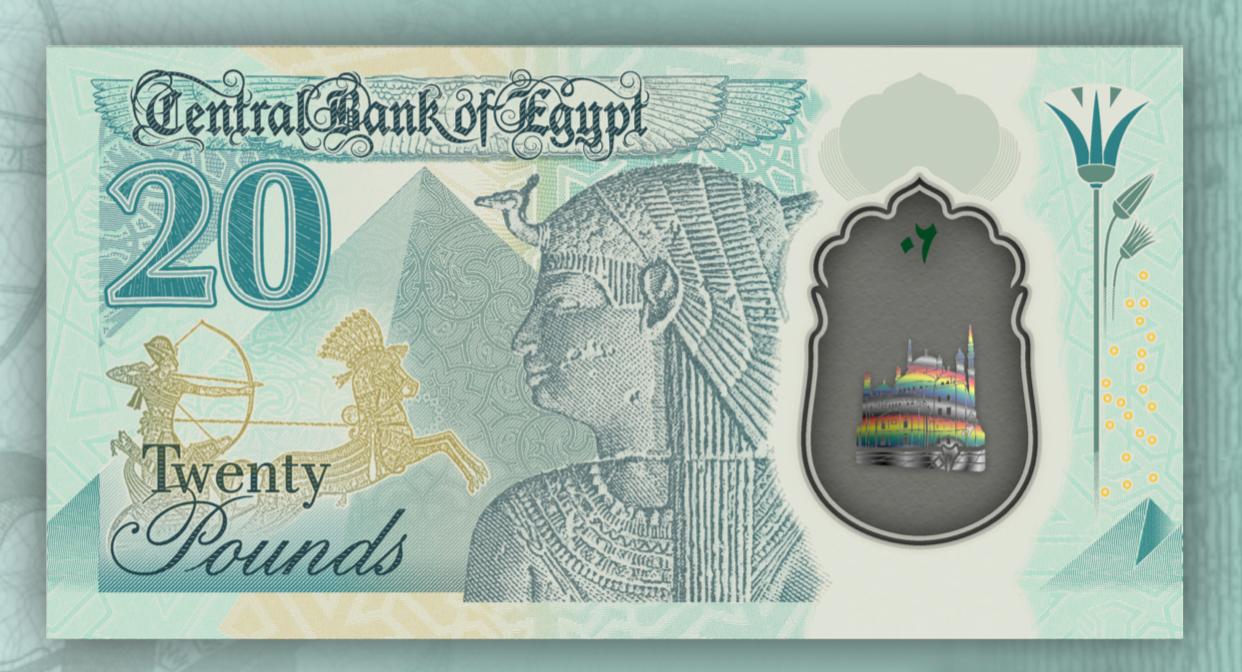CAIRO – 2 August 2021: Egypt published the first pictures of LE 10 and 20 plastic notes that will be officially issued next November from the new printing press of the Central Bank of Egypt, in the New Administrative Capital.
Sources confirmed to Egypt Today that the production of the new currency will be carried out with the latest currency production lines in the world and with the latest insurance specifications at the international level, stressing that the new LE10 and LE20 will be circulated alongside the current currency.
.jpeg)

Plastic currencies are produced from polymer, and were first used as currency-making material in Australia in 1988.
Plastic money is characterized by flexibility, strength, and less thickness, which allows a longer life span of up to about 5 times the life of the paper category made of cotton, in addition to being water-resistant, less affected by dust, environmentally friendly, and much less likely to pollute compared to The denominations of paper money in circulation, in addition to the difficulty of counterfeiting and counterfeiting.
Banknotes are printed according to an economic calculation process that takes into account the rate of rise in prices of goods and services produced within the country, the "inflation rate", and the rate of economic growth achieved. "Banknotes" are printed on the basis of calculating the volume of "cash" circulating within the Egyptian economy.
The process of withdrawing worn-out banknotes from the market is carried out through the supervision of the Central Bank, by withdrawing the damaged banknote from the market and replacing it with new banknotes.
The money issued by the Central Bank enjoys what is called “the power of discharge” in the sense that it is equal in value to goods and services, and it is obligatory for all parties to pay for the value of the monetary category, and when the Central Bank issues a new edition with a different design, the old version of the monetary category is not stopped.
Over the past 40 years, the insurance elements of paper currency have evolved, and began with a unified watermark for all categories, the addition of insurance tapes, the addition of visually variable elements in printing inks, the addition of elements against color photography for all denominations, and a custom watermark - in 2012 - For each category separately, which necessitated the replacement of the old categories with the new, with the utmost smoothness that takes into account the circulation of cash.
The state will resort to printing the 10 and 20 pounds of polymer material; because it is the most widely traded, as plastic money is characterized as 3 times the life span of its paper or bank counterparts.
Comments
Leave a Comment